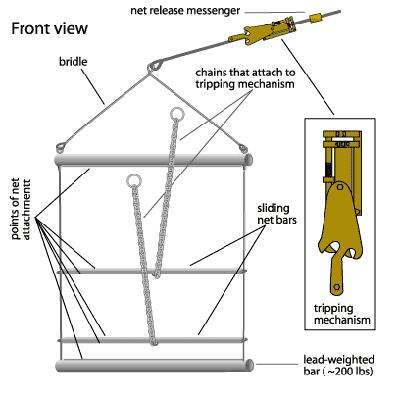Gear Description
The Tucker trawl was developed to take a discrete sample within a specified depth range (Davies and Barham 1969). The original design used timing devices to release bars that opened and closed a net. Modifications to the original design permit the use of two nets sequentially which are opened and closed using two messengers sent down the wire to activate a tripping mechanism. The action releases the net bar which simultaneously opens one net while closing another. This allows the Tucker trawl to sample specific depths without contamination from other depths. The nets are usually constructed to have a 1 by 1 m opening when towed. The towing wire attaches to a bar just above the top of the nets, and cables run between the top bar and a weighted bottom bar. The nets are attached to additional top and bottom bars which slide on the side cables as the tripping mechanism is activated. As with the bongo, there are no obstructions in front of the net as it is being towed.


Gear Citation:
Davies, I.E., and E.G. Barham. 1969. The Tucker opening-closing micronekton net and its performance in a study of the deep scattering layer. Marine Biology, Vol. 2, No. 2, pp 127-131.



